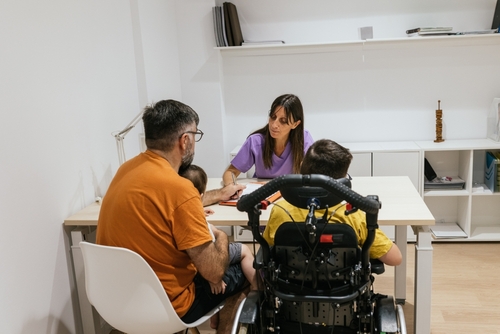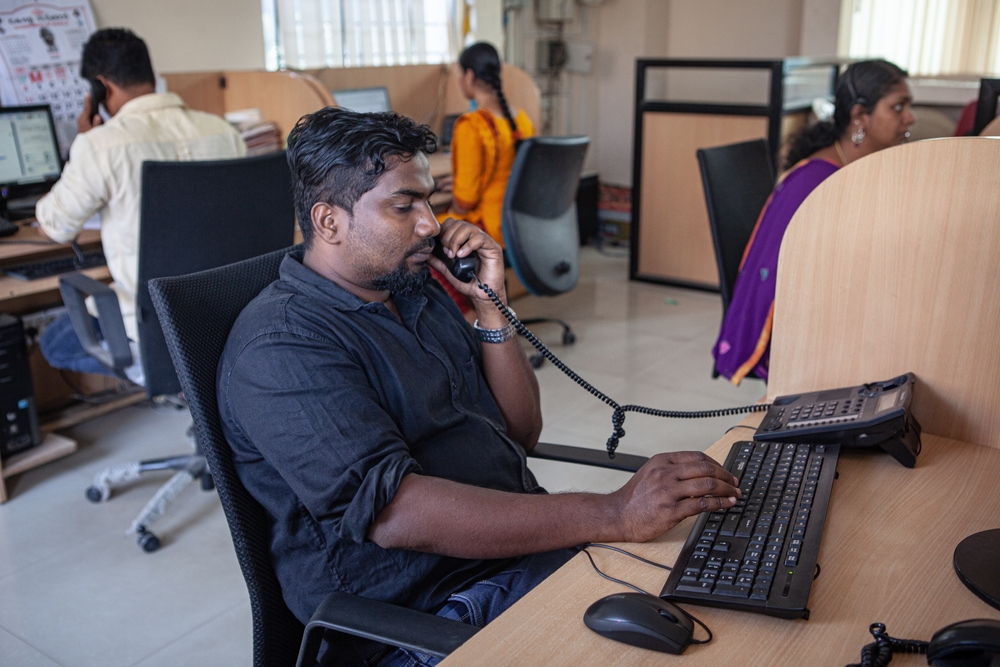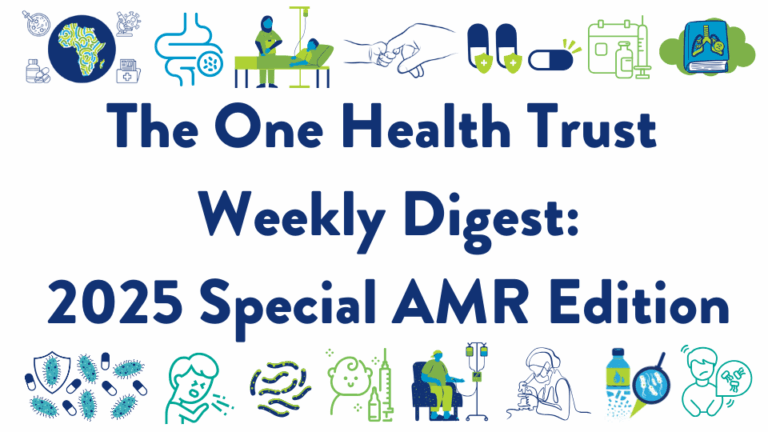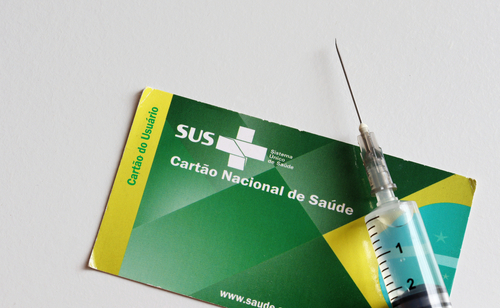April 12, 2021
One Health approach should be implemented in medical education and clinical practice. CDDEP researchers and other experts in One Health policy examined issues relevant to One Health approaches through examples of challenges and successes to guide application in clinical practice. Specifically, the experts emphasized the need to better implement One Health education in medical schools to address knowledge and training gaps on environmental health and management of zoonoses. The recommendations provided by the expert panel fell under four broad categories: 1) improve One Health resource sharing in global health and medical education, 2) create pathways for information flow in clinical medicine and global health practice, 3) develop innovative partnerships for improved health sector outcomes, and 4) inform and empower health through outreach to the public. [Annals of Global Health]
Venous thromboembolism events connected to the Oxford–AstraZeneca COVID-19 vaccine are not above expected incidence rates. Researchers from Aarhus University Hospital in Denmark used population-based data to estimate the natural incidence of venous thromboembolism in the Danish population and compare it with that of individuals vaccinated in Europe as of March 10, 2021. The estimated incidence rate per 1000 person-years of 1.76 (95% CI 1.75 to 1.78) for venous thromboembolism among Danes aged 18–99 years would correspond to 736 expected cases per week among the five million people that received the vaccine in Europe. Despite study limitations, venous thromboembolism events reported in relation to the Oxford–AstraZeneca COVID-19 vaccine do not seem to increase beyond the expected incidence rate. [The Lancet]
Rapid diagnostic tests could decrease diagnostic delays and SARS-CoV-2 transmission in LMICs. A prospective diagnostic accuracy study led by Epicenter in Cameroon assessed the performance of four antibody-based and one antigen-based rapid diagnostic tests for community SARS-CoV-2 detection in Cameroon. The antigen-based rapid test showed 80.0% sensitivity during the first seven days after symptom onset. In contrast, antibody-based tests had low sensitivity (26.8%) during the first week of symptoms, which increased to 76.4% 14 days after symptom onset. The findings highlighted the utility of rapid diagnostic tests in diagnosing SARS-CoV-2 infection and their use as an alternative to PCR to decrease diagnostic delays and viral transmission. [The Lancet Infectious Diseases]
SARS-CoV-2 neutralizing antibodies are relatively stable for at least nine months. Researchers from the Wuhan Center for Disease Control & Prevention and other institutions in China conducted a longitudinal study to determine the seroprevalence and kinetics of anti-SARS-CoV-2 antibodies at the population level between April and December 2020. In a cross-sectional sample of the population, including more than 9,000 Wuhan residents, the adjusted seroprevalence was 6.92% (95% CI 6.41–7.43), and asymptomatic individuals comprised 80% of those that were antibody-positive. Neutralizing antibodies developed in approximately 40% of antibody-positive individuals, and their levels did not significantly decrease during the study period, emphasizing the need for mass vaccination to achieve herd protection and prevent a resurgence of the epidemic. [The Lancet]
Age, comorbidities, and elevated CRP levels as risk factors for severe COVID-19 in children. In a retrospective cohort study led by researchers at the University of Colorado, risk factors for severe COVID-19 were investigated among 454 patients < 21 years of age between March and July 2020 at Children’s Hospital Colorado. Multivariate analyses revealed that extreme age (0-3 months or >20 years) (OR 7.85), preterm birth history (OR 3.7), and comorbidities, including immunocompromising conditions (OR 3.5), gastrointestinal conditions (OR 2.7), diabetes (OR 6.6), and asthma (OR 2.2) were predictors for admission (p<0.05). Extreme age, asthma, and gastrointestinal conditions were also significantly associated with needing respiratory support, whereas elevated C-reactive protein (CRP) was significantly associated with the need for critical care. [The pediatric Infectious Disease Journal]
Neonatal sepsis isolates resistant to WHO-recommended first and second-line treatments in LMICs. The Burden of Antibiotic Resistance in Neonates from Developing Societies (BARNARDS) study led by Cardiff University researchers characterized the cause and burden of antimicrobial resistance in neonatal sepsis for seven low-and middle-income countries in Africa and South Asia. Klebsiella sp., E. coli, and Enterobacter sp. were the main Gram-negative bacteria (GNB) responsible for sepsis in neonates, with the majority of the isolates being resistant to the first and second lines of the WHO recommended treatment for neonatal sepsis. Additionally, the identification of 58 different GNB species illustrated the complex etiology of neonatal sepsis and the need for better research towards treatment options in LMICs. [Nature Microbiology]
Empirical TB treatment without microbiological confirmation associated with increased mortality among HIV-positive patients. Approximately half of the patients who die of TB in healthcare facilities in sub-Saharan Africa are undiagnosed at the time of death, leading to many HIV-positive patients being treated ‘empirically’ for TB. Researchers from the University College London and the London School of Hygiene & Tropical Medicine conducted a retrospective cohort study on HIV-positive residents in a hospital in Kwazulu-Natal, South Africa. They revealed that empirical TB treatment was common among HIV-positive patients and that only 11% (11/100) of the empirically treated patients had subsequent microbiological confirmation. In-hospital mortality in patients with microbiologically confirmed TB was lower than in those treated empirically (adjusted sub-distribution HR 0.5, 95% CI 0.3 to 0.9). The findings warrant using existing TB rapid-tests to prevent overtreatment and reduce unnecessary health and economic costs. [Open Forum Infectious Disease]
A three-day antibiotic regimen to treat pneumonia is non-inferior to the standard eight-day regimen. Researchers at Paris and Paris Saclay Universities, in collaboration with other institutions in France, conducted a double-blind, randomized, placebo-controlled, non-inferiority trial to investigate β-lactam therapy for pneumonia treatment could be reduced without losing its effectiveness. The 303 eligible study participants were randomly assigned to receive placebo (n=157) or β-lactam (n=153) for five days following a three-day treatment with β-lactam. Both groups had similar cure rates after 15 days, with 78% of patients in the placebo group recovering, compared to 68% in the β-lactam group. These findings carry important implications on the reduction of unnecessary antibiotic consumption. [The Lancet]
A reduction in air pollution to WHO-recommended levels could reduce mortality in European cities. Researchers from the Institute for Global Health in Barcelona, Spain, estimated that compliance with WHO air pollution guidelines, which are more stringent than current European Union guidelines, could prevent 51,213 deaths per year attributed to exposure to ambient particulate matter (PM) with a diameter less than or equal to 2.5 μm (PM2.5) and 900 deaths per year attributed to NO2 exposure, in 969 European cities. The highest PM2.5 mortality burden was estimated for cities in northern Italy, Poland, and the Czech Republic, while the highest NO2 mortality burden was estimated for large cities and capital cities in western and southern Europe. The findings suggested that compliance with WHO air pollution guidelines could avert up to 15% of mortality attributed to air pollution in European cities. [The Lancet Planetary Health]
The benefits of seasonal influenza vaccination in middle-income countries extend beyond disease reduction. The benefits of seasonal influenza vaccines (SIV) may extend beyond disease reduction to strengthen health systems and immunization programs. Researchers at The Task Force for Global Health and the Center for Disease Control and Prevention (CDC) collected qualitative data from key informants in six middle-income countries recipients of the Partnership for Influenza Vaccine Introduction (PIVI) program. In addition to disease reduction, respondents reported improvements in attitudes to SIV among risk groups, increased demand for SIV due to collaboration with mass media, and improvements in relationships with other ministries. Reported challenges included sustaining investment, meeting coverage goals, and managing campaigns. [Vaccine]
Photo: Shutterstock













